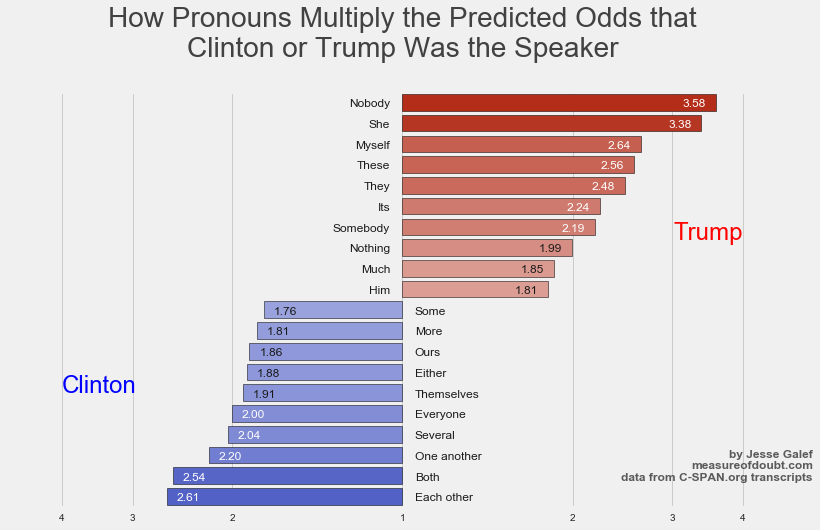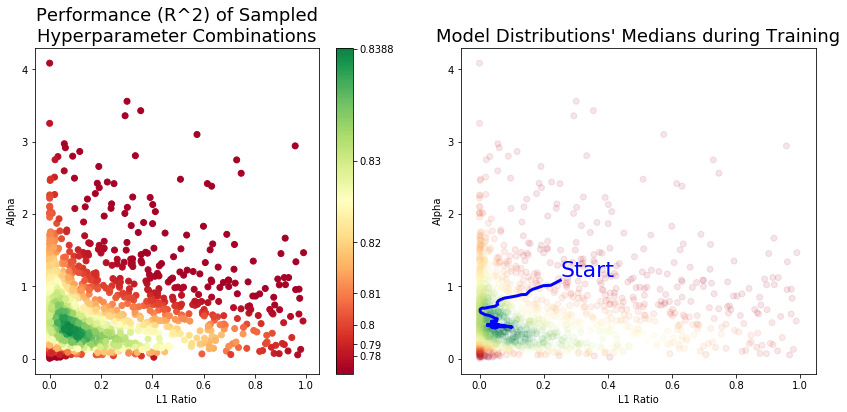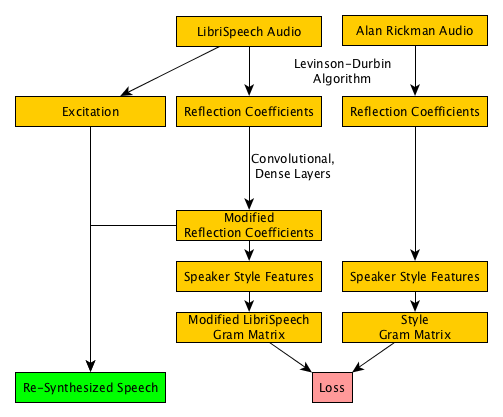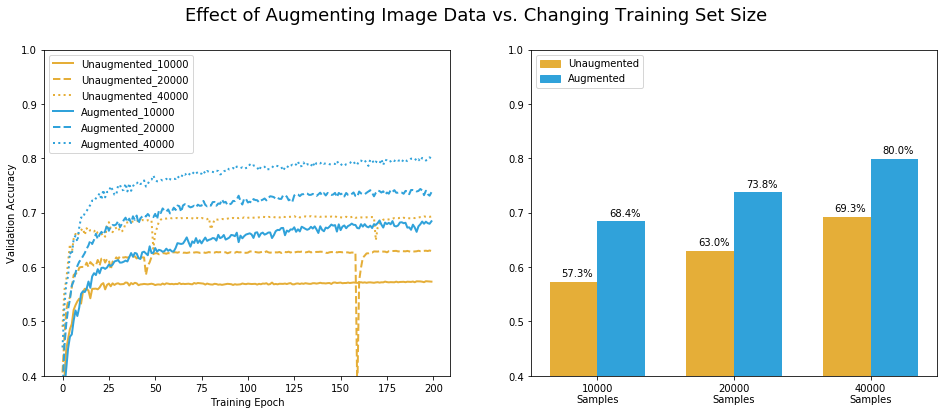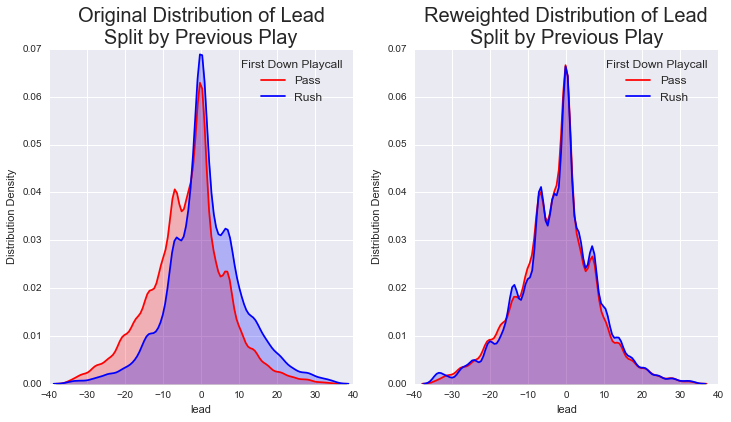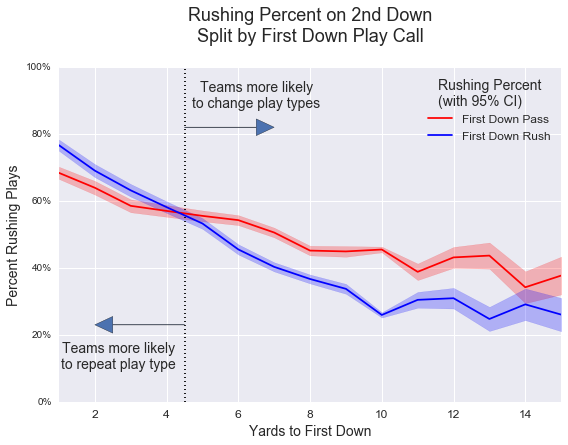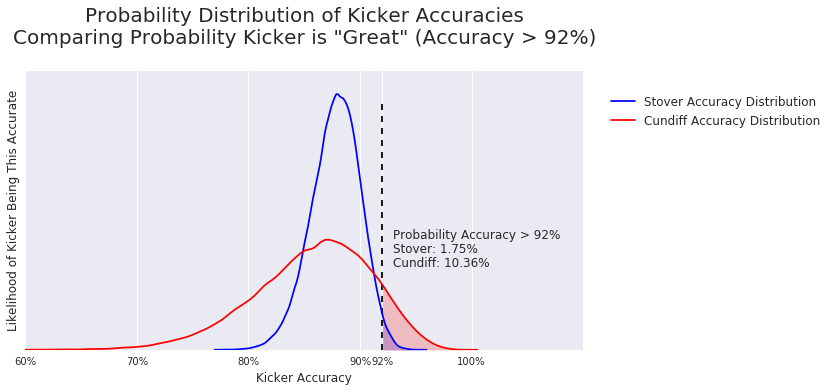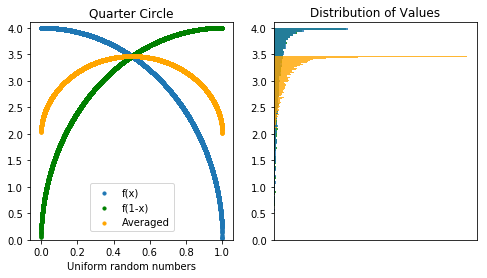-
Quantifying the 'Trumpiness' of Political Speech Using Natural Language Processing - Natural Language Processing, Logistic Regression, Cross Validation, Web Scraping, Visualization, Interactive Visualization with D3
-
Regularization Hyperparameter Tuning with Reinforcement Learning: Implementing Proximal Policy Optimization to Reduce Overfitting - Reinforcement Learning, Hyperparameter Tuning, Regularization, Keras Deep Learning Library, Scikit-Learn Linear Models
-
Comparing Techniques for Audio Style Transfer For Converting One Voice to Another -- Audio Processing, Speech Recognition, Style Transfer, Deep Learning
-
Improving Image Classification with Data Augmentation -- Image Processing, Convolutional Neural Nets, Keras Deep Learning Library, Data Augmentation
-
Evaluating NFL Play Calling Predictability: Controlling for multiple non-linear confounders using inverse probability of treatment weighting -- Non-Linear Models, Inverse Propensity Score Weighting, Feature Engineering, Data Visualization
-
Making Judgements on Limited Information: Using Bayesian Inference to Compare Hypothetical Options -- Probabalistic Programming (via PyMC3 Package), Bayesian Modeling, Web Scraping
-
Estimating Pi from Random Numbers: Reducing Variance using Antithetic and Control Variates -- Random Simulation, Variance Reduction Techniques
Natural Language Processing, Logistic Regression, Cross Validation, Web Scraping, Visualization, Interactive Visualization with D3
Summary: Donald Trump and Hillary Clinton have fairly distinct speaking styles on the campaign trail, but what makes them distinct?
This project scrapes transcripts from CSPAN.org to train a model to identify the most important terms for identifying which candidate said a given sentence, and to find the most emblematic sentence for each (The 'Trumpiest', if you will).
In addition to graphs visualizing the results, I created an interactive D3 JavaScript page for visitors to play with the results, enter their own sentences for evaluation, and look up terms.
One result:
2) Regularization Hyperparameter Tuning with Reinforcement Learning: -- Applying Proximal Policy Optimization to Reduce Overfitting
Reinforcement Learning, Hyperparameter Tuning, Regularization, Keras Deep Learning Library, Scikit-Learn Linear Models
Summary: Following an idea I saw in a paper I read for my Deep Learning class, I wanted to try using reinforcement learning to tune regularization hyperparameters and prevent overfitting.
The ElasticNet model requires two hyperparameters for regularization, l1_ratio and alpha. The goal is to try a number of random combinations of the two, becoming less random over time as it learns which combinations performed better.
Like the Google Brain paper, I used OpenAI's Proximal Policy Optimization algorithm to keep the reinforcement learner progressing with steady steps rather than jumping around wildly. I trained it for 100 minibatches of 16 samples, updating its distributions after each minibatch.
The distribution for l1_ratio quickly fell near zero until the values for alpha concentrated around .45, at which point the model began sampling larger l1_ratio values again. When this path is plotted along with the performance of each hyperparameter combination, it looks like the reinforcement learning model was finding the best area to sample from:
Our tuned ElasticNet outperformed the out-of-the-box LassoCV and RidgeCV models but took significantly longer.
It was fun to learn and demonstrate the process, but unless the extra tiny bit of performance is vital, simpler approaches are likely better when you have so few hyperparameters to tune.
This project for my Speech Recognition course explored audio style transfer in the domain of speech, comparing how well three different feature extraction methods represent a speaker’s style: AutoRegressive modeling coefficients of the vocal tract, Speaker identification faux i-Vectors, and a wide set of random convolutional filters.
Using these three different feature sets to model a speaker’s style profile, a content audio was modified through a series of convolutional and residual layers to more closely match the speaking style of the late Alan Rickman.
While the neural nets proved capable of converting a given vocal tract profile to match that of the target’s, the modifications proved insufficient to sound as though the resynthesized audio came from a different speaker. By only adjusting the vocal tract information – leaving the vocal cord excitation signal’s pitch and amplitude unchanged – the alterations left out many important subjective elements of Alan Rickman’s voice. Future work could include both elements of the source-filter model in their style transfer and would likely produce higher quality results.
Writeup PDF: https://github.com/JesseGalef/Portfolio/blob/master/Speech_Style_Transfer/jbg2160_finalWriteup.pdf
Code: https://colab.research.google.com/drive/157CErdbKP68nU86g5K645Czn5irG8gKL
4) Improving Image Classification with Data Augmentation -- Pretending you have more data than you do
Summary: In training a neural net, having more training images can make a real difference -- but that can be expensive. Rather than paying a grad student to go take and label more pictures, you can be creative and reuse the images you have.
This project demonstrates the advantages of using data augmentation on the CIFAR-10 dataset to increase a neural net's ability to classify out-of-sample images. By applying simple transformations to the images during training, the same neural net architecture was able to nearly match the performance of a model which was given four times as many training examples.
(And actually, since each epoch updates the weights for each batch of 128 images in the training set, the un-augmented model with 40,000 samples had four times as many updates. If allowed to train longer, the augmented model with 10,000 may surpass it.)
5) Evaluating NFL Play Calling Predictability - Controlling for multiple non-linear confounding variables using inverse probability of treatment weighting
Non-Linear Models (Random Forest Classifiers), Inverse Propensity Score Weighting, Data Visualization, Feature Engineering
Summary: There's a curious pattern in NFL play calling, which we think might be the result of coaches' irrationality. But there are so many confounding variables in play - score, time, QB quality, etc. - that we need to control for those first before passing judgement.
The project is an exercise in feature engineering and the 'inverse probability of treatment weighting' technique of controlling for confounds. These features were disproportionately distributed between the groups I was comparing, but became far more similar after being reweighted.
6) Making Judgements on Limited Information - Using Bayesian Inference to Compare Hypothetical Options
Summary: This project was an example probabilistic programming problem I created for the data science class I was TA'ing. If you have two options, one established and one much newer, how do you judge the probability each is better given the limited information you have?
For the class, the example uses hypothetical field goal kickers, but it generalizes to other topics like A/B testing.
The project scrapes data from NFL.com to use as a prior distribution, then it shows the students how to use the pymc3 library to generate new probability distributions and answer specific questions.
7) Estimating Pi from Random Numbers - Reducing Variance using Antithetic and Control Variates
Summary: This was a fun little project I put together to demonstrate techniques I was learning in my Simulations course (IEOR 4404) in graduate school.
Using only 10,000 random numbers, how accurately can we estimate pi? The classic technique of plotting points and counting how many fall within a quarter-circle does pretty well, but there's a decent margin of error.
With unlimited random points, our estimate would get closer and closer to the true value of pi. But even sticking with only our 10,000 random numbers, we can apply some tricks and narrow our confidence interval significantly.
